Positioned along the Pearl River in Guangzhou, Shamian Island is a stunning reminiscence of the city’s colonial history. It served as a center for international trade during the 19th and early 20th centuries and is now an open-air museum featuring European architectural designs and cultural intersection. It is a rest spot away from the frenetic modern city. In this blog post, I will walk you through the island’s captivating history, the landmarks one must see, and its peculiar charm even today. If you are an architecture admirer, a history buff, or searching for a scenic barefoot walk, Shamian Island will continue to astound you. Join us as we explore this old-world island’s hidden history and culture, making it a unique, exceptional destination.
How Do I Reach Shamian Island in Guangzhou?
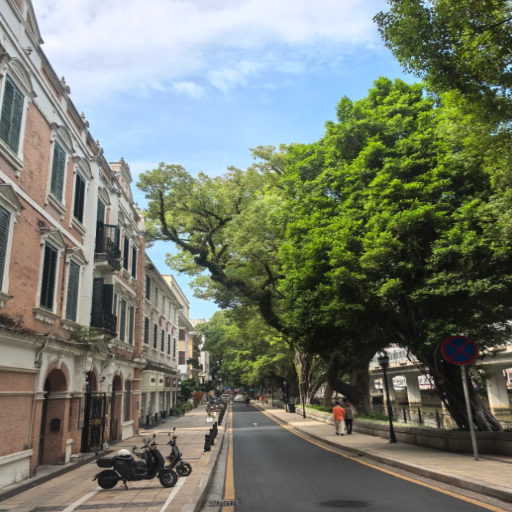
How Do I Reach Shamian Island in Guangzhou
Reaching Shamian Island can be done quickly as minimal effort is required when using public transportation or a private vehicle. For public transit users, take Metro Line 1 and get off at Huang Sha, where you will use Exit F. From there, it is a short walk to the island. If you prefer the bus, routes 1, 57, and 208 all stop close to Shamian Island. There are parking lots close to the island for people who drive to the island. Its position guarantees that it will always be along the path of the most visited places in Guangzhou, which is good for you as a traveler.
Best Ways to Get to Shamian Island
The best time to visit Shamian Island is during Spring Break (March to May) and Autumn Break (September to November) when the weather in Guangzhou City is perfect. During these times, the average temperatures range from fifty-nine Fahrenheit to eighty-two Fahrenheit, which is quite comfortable for activities outside. Steer clear of visiting during peak Summer as the temperatures and high humidity can go over ninety degrees. The island’s streets offer beautiful landscapes with fresh, clean air, which can be enjoyed in the early morning and late afternoon as fewer people during these times.
Using Huangsha Station for Easy Access
Huangsha Station is located on Lines 1 and 6 of the Guangzhou Metro. It is the best station to go to on Shamian Island. Huangshan also has excellent public transport facilities and is an ideal tourist stop. To reach the island, passengers must emerge from the station at Huangsha and take Exit F. Walk either over the pedestrian bridge or the short riverside path. The station is well-signposted, and the walk to Shamian Island is roughly 5-10 minutes long.
For commuters, Huangsha Station is in the middle of the metro-integrated bus system with routes 1, 25, and 208, which stop here. It has essential services such as ticket vending machines, toilets, and information signs. Generally, Line 1 operates from 6:10 to 23:00, and Line 6 operates from 6:20 to 23:00. This gives passengers much time to plan travel. For those with bags, help is provided by escalators and lifts.
Huangsha Station enables people to travel quickly to Shamian Island, where visitors can easily walk to explore other sites in Guangzhou.
Travel Tips for Visiting This Island in Guangzhou
While you are strolling around Shamian Island, I recommend bringing a good pair of walking shoes with you, as the stylish colonial architecture on the island is best enjoyed while walking around. Make sure to have a lightweight umbrella or a hat for shade- here’s a tip: Guanzhou is humid in the hot months. The island has some popular restaurants, and if you are planning to eat there, ensure you get there earlier to avoid the crowds. Early morning and late afternoon are also the best times to indulge in your photography hobby since the natural light is perfect for capturing this stunning historic place. In the end, I would make sure to have some local currency on hand to make small purchases since not all vendors take foreign cards or digital payments, and also plan your trip during the off-peak seasons for a more serene vacation.
What Is the Colonial Past at Shamian Island?
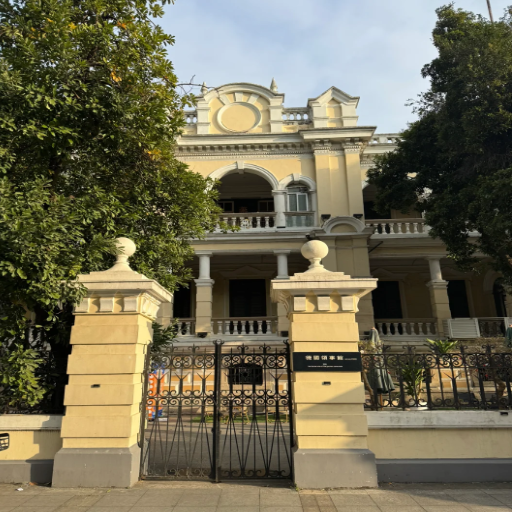
What Is the Colonial Past at Shamian Island
Shamian Island has a colonial past stems from its history as a trading center in the 19th century. Following the Second Opium War, the island was split into British and French concessions. Trade and diplomacy became key activities in Guangzhou. During this time, many European-style buildings, churches, and consulates were erected; a fusion of Western style and Chinese architecture can be seen in them. The foreign buildings serve as a reminder of an exchange-filled and foreign-influenced past.
Tracing History: From the Second Opium War to Today
Guangzhou’s history was profoundly shaped by the Second Opium War, especially with the foreigner-controlled concessions. These areas became extremely important for trade and diplomacy, leading to the Europeanization of the city’s architecture and governance.
Aspects relevant to this historical period include:
- Timeline: The Southern part of the island was occupied by Europeans and Americans after the Treaty of Tientsin in 1858 and the Convention of Peking in 1860.
- Architectural Features: During this timeframe, there were many European imprints, Such as Gothic-style churches, neoclassical consulates, and colonial trading offices.
- Trade Impact: Guangzhou was an important trading center for silk, tea, and porcelain, establishing the city within global trade routes.
- Cultural Exchange: The growing contact between the local people and foreigners allowed the Western educational style, clothing, and even technology to be absorbed into Chinese life.
These aspects emphasize the enduring impacts of the Second Opium War on Guangzhou’s urban and cultural development. Through architecture and trade relations, Guangzhou integrates the bygone era with contemporary society.
Influence of British and French Colonialism
British and French colonialism profoundly affected Guangzhou’s infrastructure and socio-economic structure. After the Second Opium War, colonial powers erected territorial bastions, such as the British concession on Shamin Island. This became a central trading point characterized by Western China’s urban housing and decoration style, which were constructed using Western design principles rather than traditional Chinese ones.
Economically, French and British colonialism changed Guangzhou into one of the key port cities of China and transformed tea, silks, and porcelain into exports, bringing Guangzhou into globalization trade networks. The colonial period also saw the imports of Western goods into China being enhanced by introducing steamships and new navigation techniques. During this time, foreign banks, customs houses, and industrial regulations were created, which marked the beginning of modern trade in Guangzhou.
Colonial influence also diversified the Western schooling system, missionary schools, and hospitals. It enabled some features of Chinese society to be modernized while allowing an amalgamation of Eastern and Western philosophies. During this era, technologies essential for colonial governance, such as the telegraph, were brought to Guangzhou and the market.
Guangzhou’s colonial architecture, the complex nature of its trade, and the cultural interchange from this period illustrate how colonialism continues to affect the city.
Exploring the Tree-lined Streets and Architecture
Walking through Guangzhou’s streets is like unraveling rich threads of culture and history and taking an enriching stroll through the city. Some of the city’s stunning colonial buildings, like Shamian Island and its structures, are preserved, and they are a beautiful blend of both European and Chinese architecture. This city’s wide streets are impressive, lined with banyan trees, and add great charm while escaping from the fast-paced city life. Also, many of these preserved areas are pretty easy to navigate, and tourists can walk on clean pavements with informative boards that narrate the place’s rich history. No doubt, the city has elements from a variety of styles like Gothic, Baroque, and Neo-classical, which can be noticed in the arched windows along with the well-crafted details on the facades and beautifully large courtyards, all representing the late nineteenth to early twentieth-century craftsmanship. Walking through these roads is a wonderful experience with the heritage of the city and its international impacts.
What Can I See During a Walk Around Shamian Island?
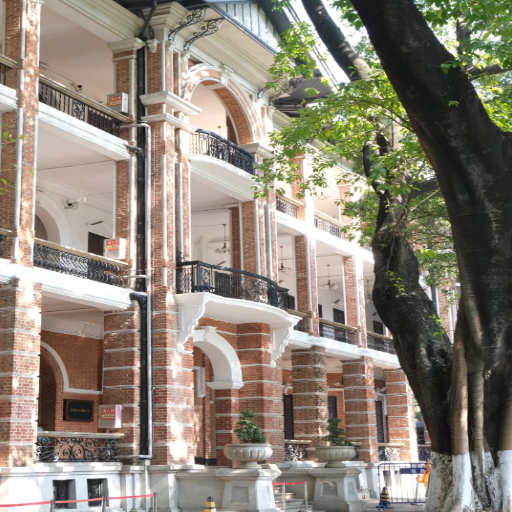
What Can I See During a Walk Around Shamian Island
On a walk across Shamian Island, the sights of breathtaking colonial-style buildings, impressive waterfronts, and tree-lined avenues with their picturesque views will capture your eye. Charming parks with fountains, lovely statues, and the remarkable St. Michael’s Cathedral, a gothic-style church, will surely take you back in time and reflect the island’s rich heritage. Quaint boutique shops, cafés, and art galleries can be found around the area, which help immerse visitors into the local lifestyle. Cute spots around the Pearl River highlight the beautiful combination of history and modern-day life that Shamian Island is home to.
Iconic Bronze Statues Scattered Around the Island
The bronze sculptures around Shamian Island evoke amazing stories of its rich history and diverse culture. Each sculpture encapsulates a story depicting different scenes from daily life from the colonial era to the present. These striking bronze statues are thoughtfully spaced in parks and along public walkways, allowing them to capture the island’s charm and invite visitors to interact with the rich stories waiting to be discovered.
The statues vary greatly, from 1.5 to 3 meters in height, allowing for both close-up and grand visual perspectives. Most are made from bronze alloy, which strengthens them against the weather. Preserving the patina requires minimal maintenance, such as cleaning or waxing. Statues are placed purposely in areas illuminated by sunlight and shaded ones, providing the perfect ratio of preservation and beauty. These statues and Shamian Island blend contemporary artistry and long-lasting strength, making them beautiful works of art.
Historic Buildings Turned into Government Offices or Apartments
Overhauling the interiors of historic buildings to suit government office or apartment use is an intricate work that enables modern usage while ensuring the historical and architectural significance of the former is preserved. While retrofits tend to maintain the primary façade of the building and its structural integrity, modernization of the interiors centers on functionality and meeting current building standards.
Considerations:
- Structural Stability: Architectural engineers estimate the conditions of the foundational supports, walls, and roof structures to determine whether they are worn or weakening. Elements such as steel or reinforced concrete may ensure stability without jeopardizing the remaining portions of the historic structures.
- Energy Efficiency: Thermally engaging features are among the top priorities and often consist of foam panels, double-glazed windows, or solar roofs, which are less obtrusive in historic design as they blend the energy-conserving features.
- Accessibility: Enabling modern-day access, such as elevators and broader doorways, ensures compliance with modern-day standards (e.g., the ADA in the US).
- Electrical and Plumbing Upgrades: Modern safety standards are met through concealed wiring within floors or walls that meet the original design aesthetics, enhancing the overall charm of the building.
- Fire Safety Measures: These features are enhanced through inconspicuously integrating fire-resistant materials or sprinklers while meeting safety requirements like NFPA (National Fire Protection Association) standards or equivalent.
- Zoning Regulations: Following local zoning laws ensures the building meets public usage standards (government offices) or the citizens’ residential needs (apartments).
Combining modern innovation with historical preservation gives birth to these adaptive reuse initiatives that revitalize aged buildings and turn them into functional ones while respecting their age-old heritage and architecture.
Enjoying a Pedestrian-Friendly Tour
When planning a self-guided walking tour, I focus on areas that are interesting and easy to navigate. Significant factors include well-kept sidewalks, overspaced sidewalks, and minimal traffic interference to make the overall experience pleasant. I also prefer areas with good public lighting, places to sit, and proximity to cafes, parks, or public restrooms.
Looking at this from a more technical viewpoint, the scope of what constitutes a successful self-guided tour is defined by the following details:
- Sidewalk Width: Minimum measurement of 4-6 feet for comfortable walking and passing.
- Crosswalks: Clear markings with proper signs and pedestrian signals.
- Gradient and Accessibility: Path gradients aligned with ADA (Americans with disabilities act) requirements such as wheelchair and stroller accessibility.
- Rest Stops: Spaced roughly every 0.5-1 mile, containing sitting or shady areas for breaks.
- Safety Features: Proper lighting and watching in busy or lonely places for added security.
Considering these factors, pedestrian tours can become adventurous and thought-provoking experiences, combining comfort with exploration.
How Does Shamian Island Connect to the Pearl River?
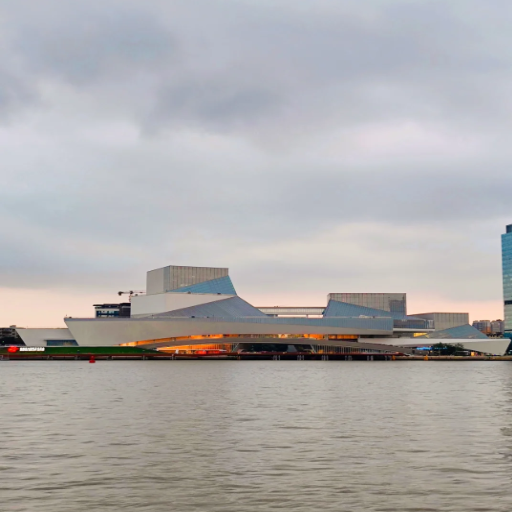
How Does Shamian Island Connect to the Pearl River
Geographically and historically, Shamian Island is connected to the Pearl River. The island’s position along the riverbank made it a key trading post and a site for colonist settlements during the colonial period. Nowadays, the river’s proximity only increases its beauty. It is accompanied by scenic promenades that extend over the bustling waterways while the river’s surroundings heavily influence its ambiance.
Strategic Importance as a Port for Guangzhou’s Foreign Trade
During the 19th and early 20th centuries, Shamian Island was an important foreign trade port due to its strategic position along the Pearl River and Guangzhou trade center. It had access to deep-water channels ideal for large trading vessels to dock. Consulates and trading firms settled on the island, transforming the area into an epicenter of international commerce. The natural depth of the river (approximately 10-15 meters in key shipping channels) alongside the island’s proximity to Guangzhou’s main urban center (around 3.5 kilometers) made the area incredibly accessible and navigable for trade at the time. Collectively, these aspects contributed to its status as a key point for exchanging goods and cultural ideas worldwide.
Walking Along the Waterfront: Scenic Views and More
Strolling beside the river combines historical allure and contemporary enjoyment into an enchanting package. The beautiful promenade is flanked by green spaces, colonial buildings, and cultural landmarks as they seek to tell a fascinating story to visitors indulging in it. A phenomenal sight is the open-facing view of the Pearl River, with its gentle waves twinkling in the sunlight, which adds to the ambiance, bringing peace to the pedestrians. The beauty and calmness of the area attract joggers, tourists, and local families, making it their go-to place.
From a more technical point of view, this promenade is nearly 1.8 kilometers long, which makes for a relaxing stroll while connecting various important heritage and recreational sites. For those who wish to take breaks during the walk, there are benches every 300 to 500 meters and other resting spots. These thoughtfully positioned amenities combined with reasonably spaced street lights make the area safe and accessible during night-time. Around 4.5 meters wide, the path offers enough space for big crowds and small gatherings. The blend of thoughtful design, natural beauty, and historical architecture make these places a go-to for travelers and locals.
Understanding the Role of the Opium Wars in Shaping the Area
The Opium Wars built this region and transformed it from local historical development to global trade. Numerous changes were made after the territorial and territorial wars, and establishing treaty ports helped boost international trade. This legacy is visible in the architectural styles and urban layout that continue to influence today’s promenade. For instance, the heritage buildings along the stretch reflect a blend of colonial and local designs, symbolizing this transformative period. Other elements related to the development of the region after the war include the deliberate construction of wide thoroughfares (4-5 meters) that made it easier for pedestrians and traders and the addition of street furniture such as lights and seats – a tribute to the ever-changing nature of the area been used for cultural and economic activities.
What Modern Amenities Are Available on Shamian Island?
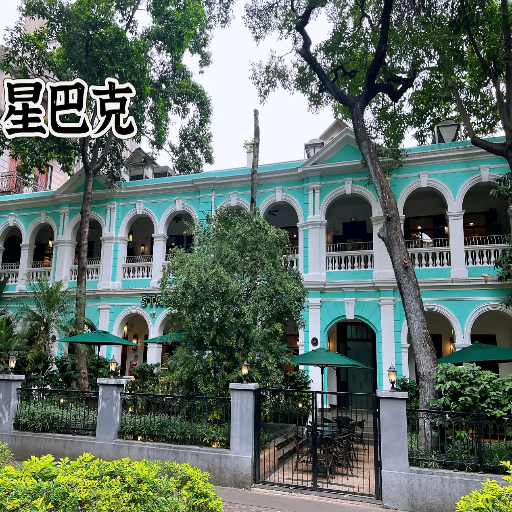
What Modern Amenities Are Available on Shamian Island
Shamian Island has undergone several aesthetic transformations over the years, some more pleasing than others. Located on their pedestrian pathways lie several casuals and restaurants serving local and international cuisines alongside numerous art galleries. In addition to these modern venues are chic boutique hotels that amalgamate modern-day services with the island’s historical traditions. Shamian caters to tourists and locals by providing public restrooms, shaded seating areas, and bike rentals for eco-friendly transportation.
Visiting the Famous White Swan Hotel
The five-star White Swan Hotel on Shamian Island symbolizes remarkable luxury and sophistication. Established in 1983, the hotel serves savvy businessmen and women with gracious service and well-designed architecture and infrastructure. The building boasts of combining modern-day amenities with Chinese traditional designs, making it the ideal residing option for tourists. Guests can have high-speed internet, smart room controls, and spacious rooms ranging from 40 to 200 square meters.
Key Features and Facilities:
- Rooms and Suites: The hotel offers a variety of standard rooms, superior suites, and executive suites, all with breathtaking views of the Pearl River or the pristine greenery of the island.
- Dining Options: There is a collection of restaurants offering Cantonese, Western, and fusion dishes, in addition to the famous dim sum at Jade River restaurant.
- Event Spaces: Proposed conference and wedding facilities include over 2,500 square meters of meeting and banquet rooms with modern audio-visual presentation equipment and sophisticated sound systems for functions.
- Leisure Facilities:
- Outdoor pool with river views
- State-of-the-art fitness center
- Spa offering traditional Chinese treatments
- Transportation:
- 24-hour shuttle service to nearby districts
- Convenient access to metro lines and a 45-minute drive to Guangzhou Baiyun International Airport
The White Swan Hotel is an icon of Shamian Island’s integration of history and modernity. It guarantees a unique experience for all visitors.
Where to Find the Nearest Starbucks for a Quick Break
Guests at the White Swan Hotel seeking a Starbucks coffee can find Starbucks at 56 Shamian South Street, a 10-minute walk from the hotel. This location has comfortable seating and free Wi-Fi and is suitable for a short break or an informal collaborative meeting. Another option is on Yanjiang Middle Road, where Starbucks is about 2 kilometers away, has more space, and has a great view of the Pearl River.
Both locations are staffed to handle the various high-traffic periods of the day, during which customers can order popular drinks such as signature espresso beverages, teas, and even seasonal drinks. All locations are ADA compliant and accept more than just cash, allowing credit cards and mobile applications like Alipay and WeChat Pay. It is best to avoid arriving before 7 AM or after 10 PM, but you can check updated hours on Maps or the Starbucks app.
Exploring Shamian Street for a Mix of Old and New
Visitors will enjoy the history and the new charm of Shamian Street, which scores high on the must-visit places. The colonial structures that served as a foreign concession town are a part of these marvelous collections of Shamian Streets. The streets adorned with trees and beautiful buildings are pleasing for walks and captures. Shamian Street combines contemporary and old culture, as it has art galleries, boutiques, and cafes along the street, making it a captivating view. Nothing beats a walk through the Pearl River or visiting Our Lady of Lourdes Chapel. The architecture of modern Shamian Street speaks for the Cuisine culture of old and new Guangzhou.
References
Frequently Asked Questions (FAQ)
Q: What is the historical significance of Shamian Island in Guangzhou?
A: Shamian Island is historically significant as it was an important port for Guangzhou’s foreign trade during the Qing Dynasty. The island’s colonial architecture and past reflect its role in the first and second Opium Wars and its subsequent development as a foreign settlement.
Q: How did Shamian Island change after the first and second Opium Wars?
A: After the first and second Opium Wars, Shamian Island was developed into a concession area for foreign traders. Many buildings, such as mansions and churches, were built during this period, and some churches eventually became factories.
Q: What architectural styles are prevalent on Shamian Island?
A: Shamian Island’s architecture is predominantly colonial, with influences from British and French styles. The buildings include mansions, government offices, and apartment houses, reflecting the island’s historical role as a foreign settlement.
Q: How can I reach Shamian Island from the Guangzhou Railway Station?
A: To reach Shamian Island from the Guangzhou Railway Station, you can take a taxi or use public transportation like the metro to Fangcun Station, followed by a short bus or taxi ride to the island, which is located in the Liwan district of Guangzhou.
Q: What is the term “sandy surface” significance about Shamian Island?
A: Shamian means “sandy surface,” which reflects the island’s physical characteristics. It was initially a sandbank on the Pearl River before being developed into an important port and later a colonial concession area.
Q: What are the popular activities or sights to see on Shamian Island?
A: Visitors to Shamian Island can enjoy walking tours of its historic architecture, visiting the churches and mansions, and observing the numerous couples taking wedding photos against the picturesque colonial backdrops. The island also offers quaint cafes and shops.
Q: Can you recommend any tours in Guangzhou that include Shamian Island?
A: Many guided tours in Guangzhou include Shamian Island as a stop, often alongside other attractions such as the Chen Clan Ancestral Hall and the Canton Tower. These tours provide insights into the city’s history and cultural heritage.
Q: What is the relationship between Shamian Island and the Liwan District of Guangzhou?
A: Shamian Island is part of the Liwan District of Guangzhou, known for its rich history and cultural landmarks. The district includes notable sites like the Chen Clan Ancestral Hall and offers a glimpse into traditional Cantonese culture.
Q: Are there any accommodations available on Shamian Island?
A: While there are no large hotels directly on Shamian Island, several boutique hotels and guesthouses are nearby, offering a charming and historic place to stay while exploring the district of Guangzhou city.